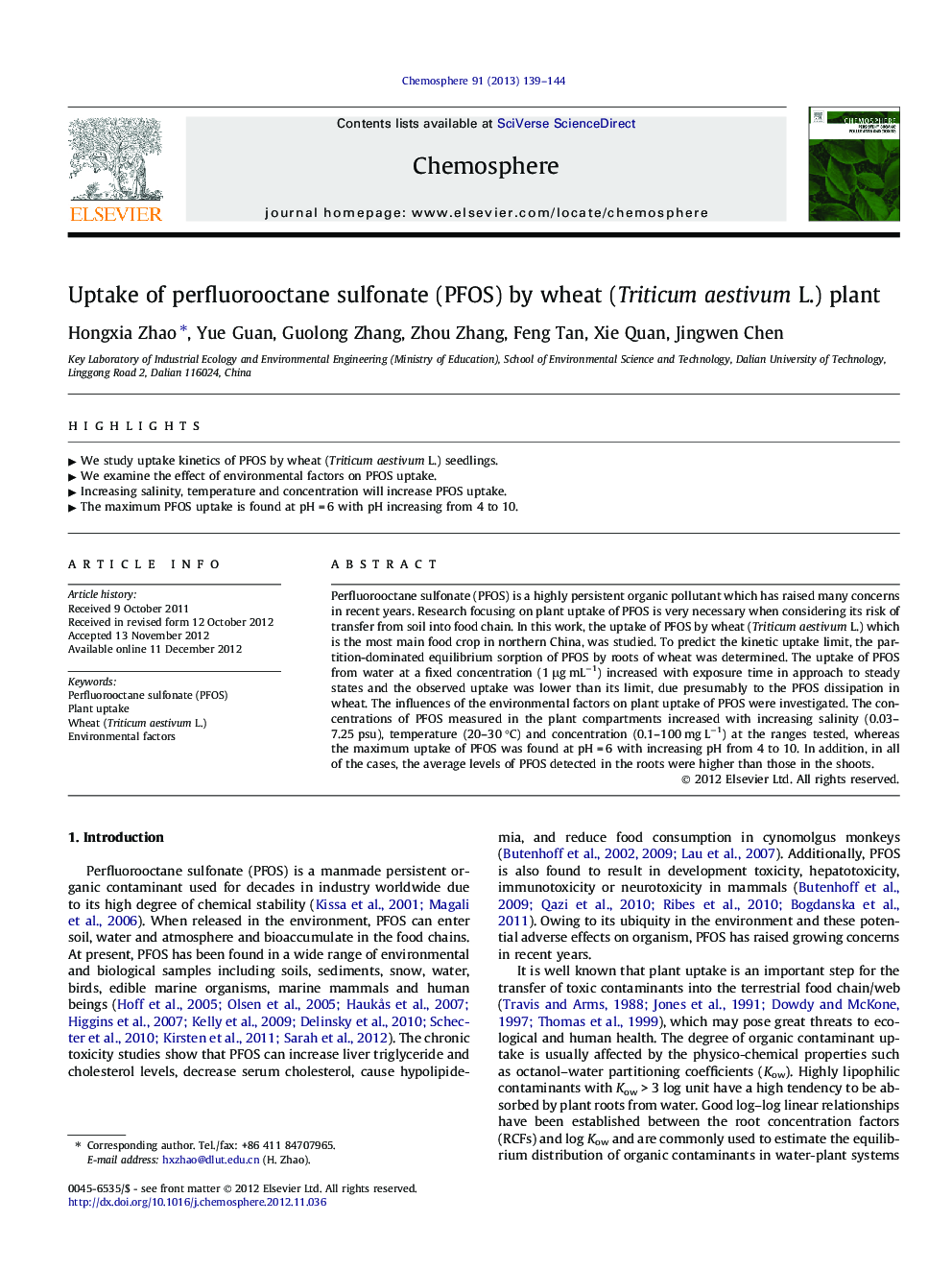| Article ID | Journal | Published Year | Pages | File Type |
|---|---|---|---|---|
| 4409238 | Chemosphere | 2013 | 6 Pages |
Perfluorooctane sulfonate (PFOS) is a highly persistent organic pollutant which has raised many concerns in recent years. Research focusing on plant uptake of PFOS is very necessary when considering its risk of transfer from soil into food chain. In this work, the uptake of PFOS by wheat (Triticum aestivum L.) which is the most main food crop in northern China, was studied. To predict the kinetic uptake limit, the partition-dominated equilibrium sorption of PFOS by roots of wheat was determined. The uptake of PFOS from water at a fixed concentration (1 μg mL−1) increased with exposure time in approach to steady states and the observed uptake was lower than its limit, due presumably to the PFOS dissipation in wheat. The influences of the environmental factors on plant uptake of PFOS were investigated. The concentrations of PFOS measured in the plant compartments increased with increasing salinity (0.03–7.25 psu), temperature (20–30 °C) and concentration (0.1–100 mg L−1) at the ranges tested, whereas the maximum uptake of PFOS was found at pH = 6 with increasing pH from 4 to 10. In addition, in all of the cases, the average levels of PFOS detected in the roots were higher than those in the shoots.
► We study uptake kinetics of PFOS by wheat (Triticum aestivum L.) seedlings. ► We examine the effect of environmental factors on PFOS uptake. ► Increasing salinity, temperature and concentration will increase PFOS uptake. ► The maximum PFOS uptake is found at pH = 6 with pH increasing from 4 to 10.
